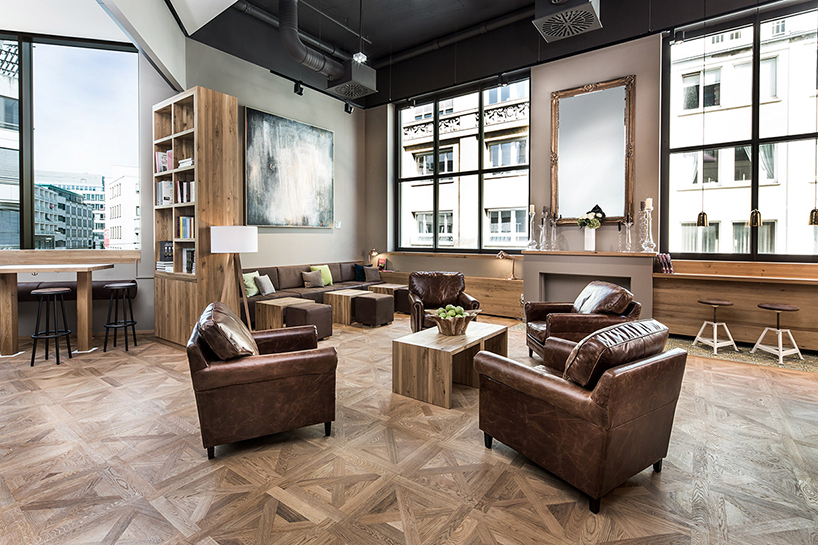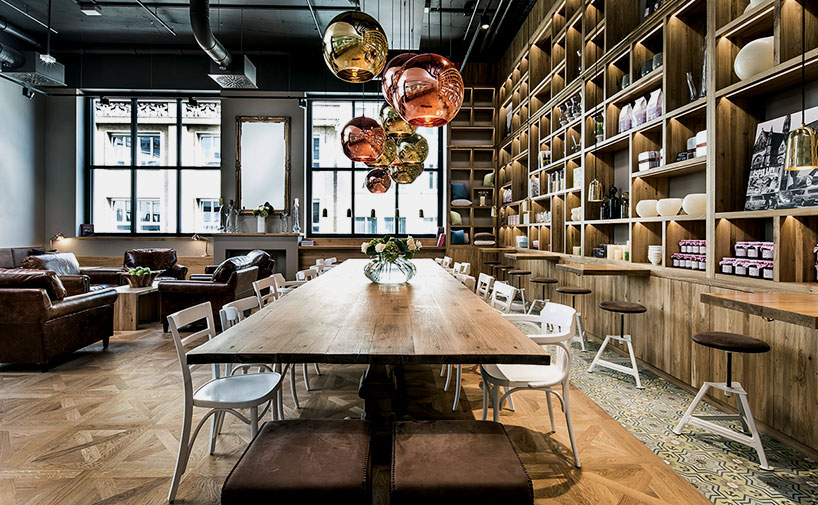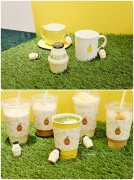Coffee shop appreciates German decoration pano brot & kaffee
In 1721, the earliest coffee shop in Germany was born in Berlin. As soon as cafes became popular in Germany, they were restricted by the local authorities. Therefore, compared with other countries, the development of German coffee is relatively simple.
It was not until the early 19th century that coffee became one of the best money-making tools at the disposal of Germans. In the mid-19th century, the vigorous development of coffee farming in Latin America and Central America was affected by the abolitionist movement, so coffee plantation owners changed imported slaves to recruit coffee farmers from Europe, and many German immigrants set foot on the land of Brazil and Guatemala. In order to attract immigrants, the Guatemalan government passed a land law in 1877 to assist German immigrant areas and granted ten-year income tax relief and six-year tariff relief for production equipment. As a result of this one-sided policy, by the end of the 19th century, the Germans owned 19% of the coffee fields in Guatemala, accounting for 40% of the country's total production. Germans who made their fortune by farming also attracted their fellow villagers to invest in coffee producing areas and lay railways to transport coffee beans. During the same period, German coffee merchants also took advantage of the opportunity to monopolize the distribution of top coffee beans in Latin America. At least 80% of Guatemalan coffee beans are shipped to all parts of Europe by German businessmen.
Dittel | architekten, a German architectural design company, designed the interior for 'pano brot & kaffee'. The store is located in the gerber Shopping Center, with a comfortable cafe environment and a solid oak table, which is 5m long and 1.15m wide. On the back wall is a bookcase of the same size and 5 meters high, displaying products of pano's own brand. There are about 92 seats.


Important Notice :
前街咖啡 FrontStreet Coffee has moved to new addredd:
FrontStreet Coffee Address: 315,Donghua East Road,GuangZhou
Tel:020 38364473
- Prev

A new banana milk coffee shop opened in South Korea
The famous banana milk now has its own coffee shop! On March 11, BINGGRAE, a Korean banana milk company, opened its first banana milk coffee shop Yellow Cafe in Dongmen and called it the banana milk flagship store. The decoration of the store was all lovely cream yellow, and there was a super-large classic bottle of banana milk close to a person's height at the door: the seller in the store.
- Next

Ningbo opened a cafe with cats.
Cats in the middle of Songjiang Road haunt the cafe, and its real owners are eight valuable cats. The top brand in the shop is the folding cat called steamed bread. Although the folding cat is a male cat, it is born with a soft temperament, and its soft and waxy voice is like being coquettish, and it is completely an elegant little princess. Mei Xiao Wu Ke can be said to be the image ambassador of the store, with charming cat eyes and pink eyes.
Related
- What brand of black coffee is the most authentic and delicious? what are the characteristics of the flavor of the authentic Rose Summer Black Coffee?
- Introduction to the principle and characteristics of the correct use of mocha pot A detailed course of mocha pot brewing coffee is described in five steps.
- Which is better, decaf or regular coffee? how is decaf made?
- How much is a bag of four cat coffee?
- How about four Cat Coffee or Nestle Coffee? why is it a cheap scam?
- Which is better, Yunnan four Cats Coffee or Nestle Coffee? How about cat coffee? is it a fake scam? why is it so cheap?
- How about Cat Coffee? what grade is a hoax? which instant coffee tastes better, four Cat Coffee, Nestle Coffee or G7 coffee?
- Process flow chart of coffee making-Starbucks coffee making process what coffee tastes good at Starbucks
- The top ten best coffee beans in the world Rose summer coffee or Tanzanian coffee tastes good
- Yunnan four cat coffee is good to drink?_four cat coffee is a big brand? four cat blue mountain coffee is fake?

